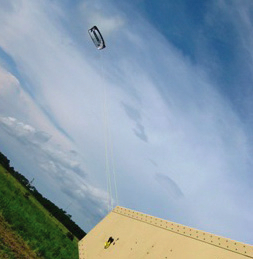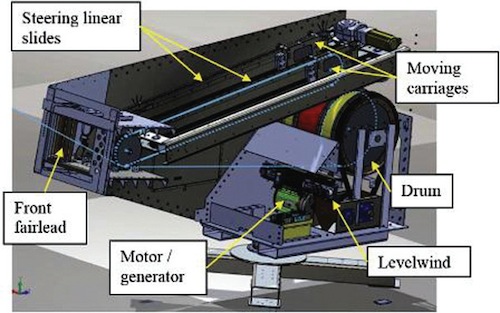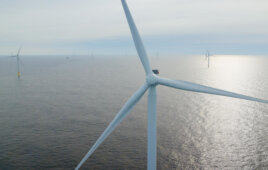Many remote locations could benefit from a few extra kilowatts now and then. Inventor Matt Bennet has devised a way to provide extra energy in a trailer mounted airborne wind-energy device. In a nutshell, a large airfoil pulls two long tethers wrapped around a drum to drive a generator and store about 12 kW in batteries. At max tether length, controls furl the airfoil and batteries power the drum to rewind the tethers. Controls then let the airfoil catch the wind and the process repeats. Additional power could be useful to remote villages, military units, and other areas without access to a grid. Bennet founded WindLift (windlift.com) in 2006 to develop the portable airborne wind-energy equipment for post-conflict reconstruction, disaster relief, and third-world development.
So far, the four-person company is testing two 12-kW (rated) prototypes and has developed a concept designs for a 23-kW Humvee-towable system. The company is funded under a contract from the DoD to develop the technology for reconstruction in Afghanistan. WindLift’s capability is said to offer greater power density than solar.
“We control the system by using an ac motor-generator, two servo motors to steer the airfoil, and two stepper motors to operate the levelwind, which neatly coils the tethers onto the drum,” says Bennet. “All devices interface with a National Instruments CompactRIO (ni.com) embedded system through a controller area network (CAN) bus interface. We also use two joysticks and a number of digital I/O to interface with the system. Currently, the system is manually operated, but future designs will be automated.

The CompactRIO embedded system has been an asset during development, says the team, so it will continue as an integral part of the system. An important aspect of this approach is a streamlined transition from manual operation to automated control. This will only involve a software update.
The CompactRIO connects sensors that monitor the horizontal and vertical angle of the airfoil with respect to the base station, the tension in the tethers, the amount of tether remaining on the drum, and the flow of power to charge the battery bank. Data from sensors is used to control the cyclic operation and maximize generated power and stability.
“The CompactRIO platform works well because the seamless interface with the LabView development environment, and it has turnkey hardware and software that require little learning,” he says. Also, modules for the platform means the sensors and protocols can be integrated with a single modular system (load cells, temperature sensors, fieldbus, analog, digital, and so on). The power and flexibility of the combined field-programmable gate array (FPGA) and real-time processor architecture offers functions that would not be possible with either component alone. Perhaps most important, NI illustrated a clear development pathway with the CompactRIO from prototype to production with the same hardware and software.

The airfoil, a sort of flying wing, pulls two tethers wrapped around drums which turns a generator. A set of batteries store power.
Bennet says the FPGA backplane in the control system was particularly useful in development. “The FPGA’s ability to run tasks in parallel at high speed (40 MHz clock cycle) lets us offload time-critical tasks from the real-time processor,” he expalins. One task well-suited to the FPGA monitors proximity sensors that act as an incremental encoder to measure the drum’s rotation. A code segment running on the FPGA counts each sensor pulse at up to 800 pulses per second and sends the incremental drum position to the real-time controller. The company is in final stages of testing the portable wind generator.
WPE
Filed Under: Projects





